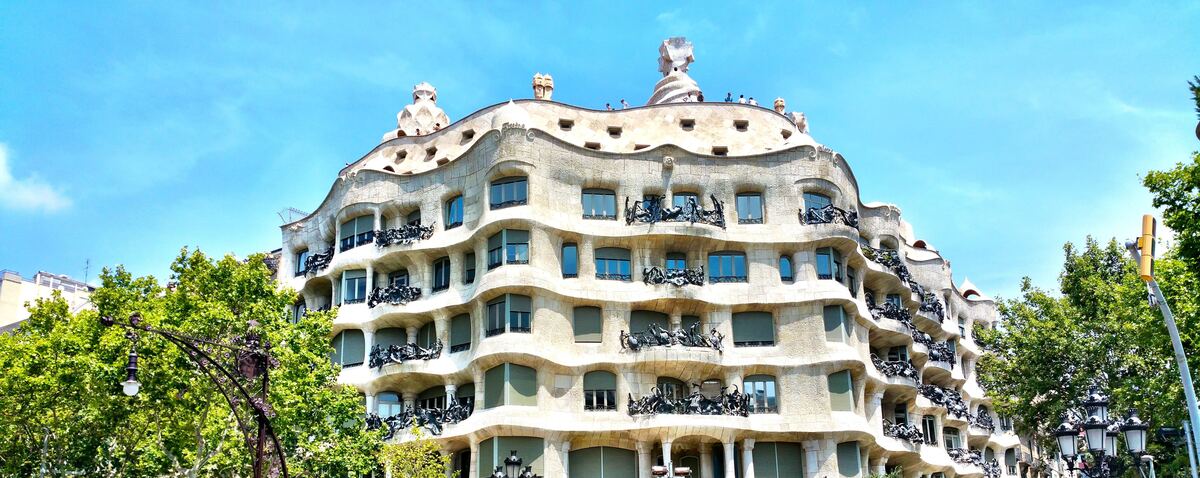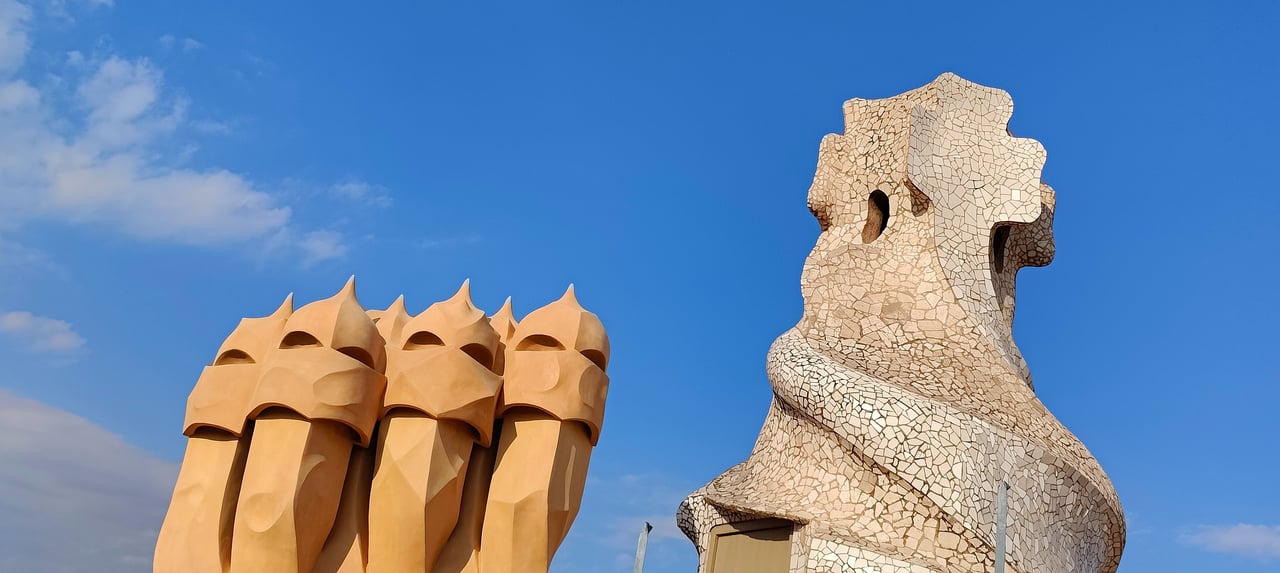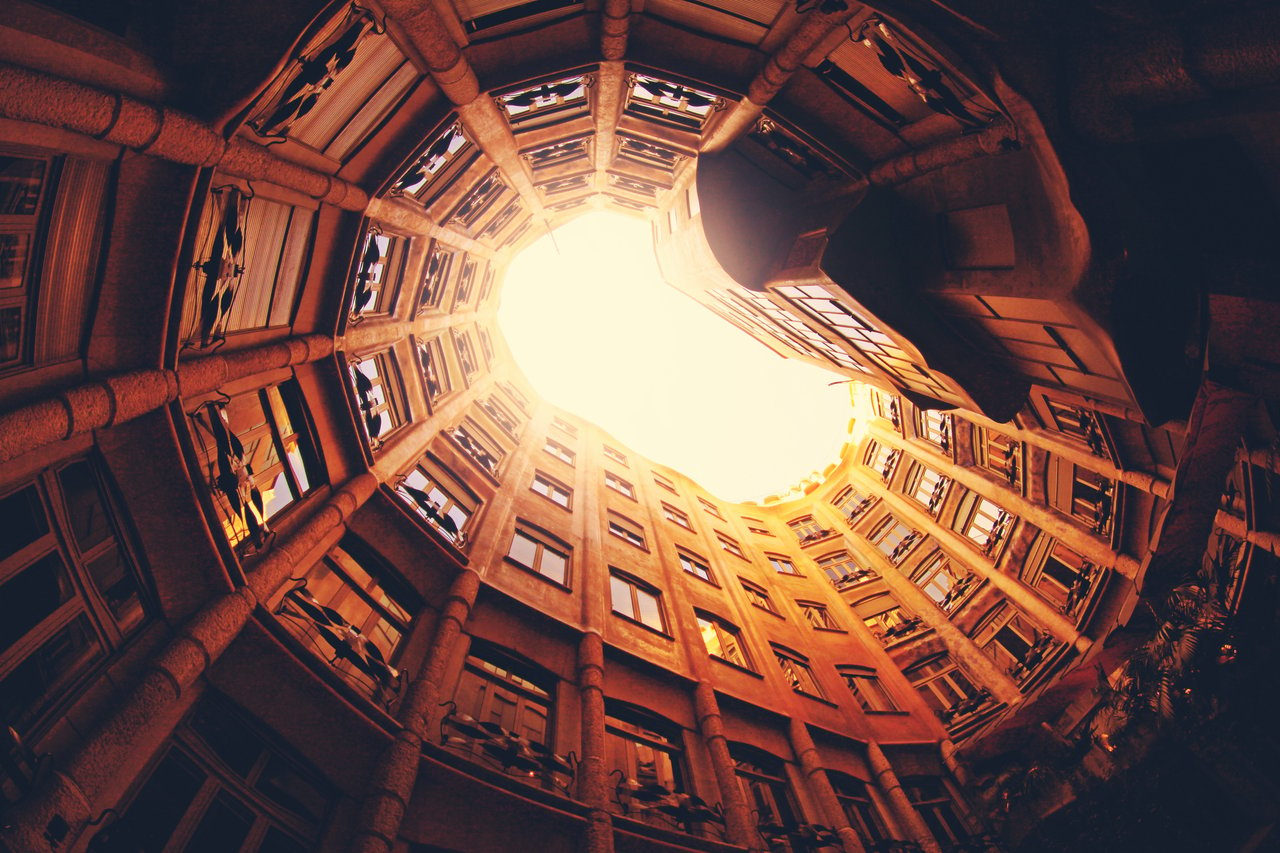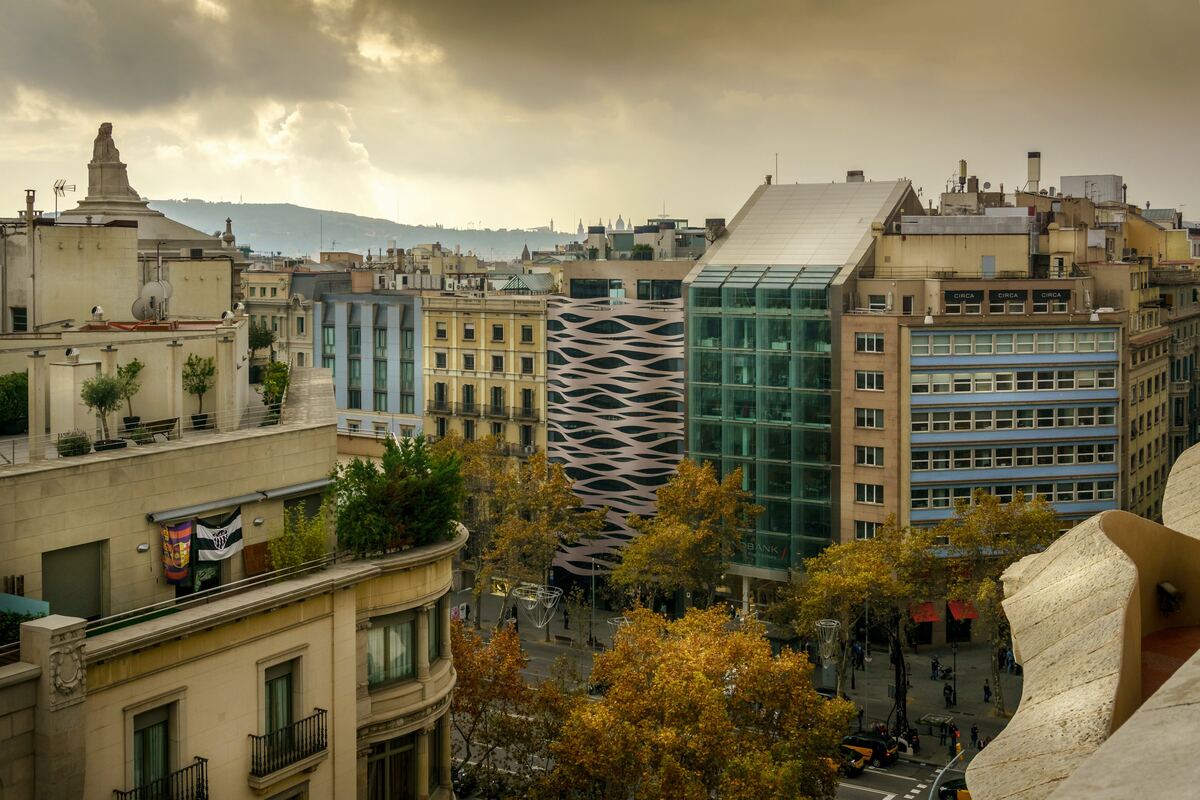Casa Milà
A Gaudí Legacy in Modernist Architecture


Casa Milà is also known as La Pedrera or "The Quarry" and is a breathtaking architectural marvel nestled in the heart of Barcelona.
It's designed by the legendary Antoni Gaudí and is an iconic building that showcases the architect's unique vision and innovative approach to design. It's a standing testament to Gaudí's genius and continues to captivate visitors with its intricate details and otherworldly charm.
Casa Milà is a must-visit if you're traveling to Barcelona. It's recommended that you book tickets to Casa Mila in advance.
Casa Milà History
Casa Milà was constructed between 1906 and 1912. It was actually commissioned by wealthy businessman Pere Milà and his wife Roser Segimon as a private residence and rental property. The building's unconventional design, marked by its undulating facade and absence of straight lines, was met with mixed reactions at the time. Critics initially derided its appearance, but over time, public opinion shifted, and Casa Milà has since become one of the most famous and cherished works of architecture in Barcelona.
The inspiration behind Casa Milà's design is rooted in Gaudí's deep love for nature and his desire to create a harmonious relationship between the natural world and the built environment. The organic shapes and forms that define the building reflect Gaudí's vision of a living, breathing structure that seamlessly integrates with its surroundings.
Architectural Plan of Casa Milà
Casa Milà's unique appearance is characterized by its wavy, organic stone facade, which appears to be carved from a single piece of rock. This innovative design, supported by a self-supporting structure, eliminated the need for load-bearing walls and allowed for greater flexibility in the building's layout.
The facade is adorned with intricate wrought-iron balconies. It was designed by Gaudí's collaborator, Josep Maria Jujol. The balconies resemble twisted vines and branches, further emphasizing the connection between the building and the natural world.
One of the most innovative aspects of Casa Milà's design is its structural system, which consists of a series of load-bearing columns and walls that can be easily modified or removed without affecting the building's stability. This approach allowed Gaudí to create a flexible, open-plan layout that could be adapted to the changing needs of its inhabitants.

Interior Spaces
The inside of Casa Milà is just as fascinating as its exterior. The building has two large courtyards, which provide natural light and ventilation to the surrounding apartments. The living spaces boast curved walls, unique decorative elements, and an array of organic shapes inspired by nature.
The apartments within Casa Milà were designed to have maximum comfort and convenience for it's residents. It includes built-in furniture, concealed storage, and state-of-the-art plumbing and electrical systems.
The attic was formerly used for storage and laundry. It shows Gaudí's ingenious use of catenary arches to create a spacious, visually striking area. The attic now houses the Espai Gaudí exhibition, which provides an in-depth exploration of Gaudí's life, work, and creative process.

Rooftop and Chimneys
Casa Milà's rooftop is one of the favourite features for visitors. If you go up to the roof, you can get beautiful panoramic views of Barcelona. The terrace is dotted with whimsical chimneys, known as espanta bruixes or "witch scarers," and other sculptural elements. These structures, constructed from brick and covered in broken ceramic tiles, add to the building's surreal, otherworldly appearance. The rooftop also features several ventilation towers and stairwells, each adorned with unique decorative elements that showcase Gaudí's meticulous attention to detail and artistic vision. You can even get a guided sunrise experience.
Cultural Significance
Casa Milà is a symbol of Gaudí's impact on the world of art and design. In 1984, it was designated a UNESCO World Heritage site, recognized for its exceptional representation of the Modernisme movement and Gaudí's innovative techniques. Today, Casa Milà serves as a cultural centre. There are hosted various exhibitions, concerts, and other events that celebrate the building's artistic legacy. As a prominent symbol of Catalan culture, Casa Milà continues to inspire and amaze visitors from around the world.
How to Visit Casa Milà?
Casa Milà is open to the public and visitors can explore its fascinating spaces and learn about Gaudí's life and work. The building is open daily, with varying hours depending on the season. Ticket prices range from €18 to €25, with discounts available for students, seniors, and children.
Guided tours in multiple languages are also offered. You'll get insights into the building's history and architectural features. Audio guides are also available for a self-paced tour experience.
Casa Milà is located in the Eixample district, easily accessible by public transportation. The nearest metro stations are Diagonal (Lines 3 and 5) and Passeig de Gràcia (Lines 2, 3, and 4). Several bus lines also serve the area, making it simple for visitors to reach this iconic landmark.
Nearby Attractions
Casa Milà's central location makes it an ideal starting point for exploring other nearby attractions. Casa Batlló, another of Gaudí's architectural masterpieces, is just a short walk away on Passeig de Gràcia. Other nearby points of interest include La Sagrada Família, Gaudí's most famous work; the Fundació Antoni Tàpies, an art museum dedicated to the eponymous Catalan artist; and the elegant shopping boulevard, Passeig de Gràcia, known for its luxury boutiques and modernist architecture. For those interested in exploring more of Gaudí's creations, Park Güell, a sprawling public park filled with colourful mosaics and whimsical structures, is just a short bus or metro ride away.

Tips for Visiting
Plan your visit during off-peak hours or book tickets online in advance to avoid long queues and ensure a more leisurely exploration of Casa Milà.
Allocate enough time to explore the various spaces within Casa Milà, including the courtyards, apartments, attic, and rooftop terrace. It's recommended to spend at least 1.5 to 2 hours on your visit.
Don't forget your camera to capture the stunning details and unique perspectives of Gaudí's architectural genius. The rooftop terrace, in particular, offers excellent photo opportunities.
Consider joining a guided tour to gain a deeper understanding of Casa Milà's history, design elements, and the inspiration behind its creation. Knowledgeable guides can provide valuable insights and answer any questions you may have.
Wear comfortable shoes, as there are several flights of stairs to climb when exploring the building. Elevators are available, but they can be slow and crowded during peak times.
Combine your visit to Casa Milà with other nearby Gaudí attractions for a better experience of the architect's work. Purchasing a combined ticket or a Gaudí-themed city pass can save you time and money on individual entrance fees.

Casa Milà, or La Pedrera, is an enchanting testament to Antoni Gaudí's unparalleled vision and creativity. This extraordinary building captures the essence of Barcelona's Modernisme movement and continues to captivate visitors from around the world. From its undulating facade to the mesmerizing rooftop terrace,



